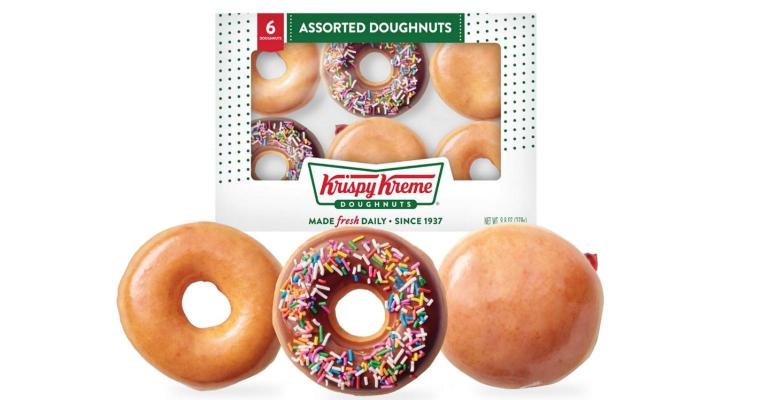Krispy Kreme Inc. continues to expand the points of access for its donuts, growing those 19.4% in the first quarter in the United States and through growing retail partnerships and new stores abroad, executives said Thursday.
The Charlotte, N.C.-based company, which released earnings Thursday for the first quarter ended March 31, said it is ramping up production hubs to accommodate the domestic growth.
Josh Charlesworth, Krispy Kreme CEO, told analysts on an earnings call: “We recently launched in France, and we've announced our expansion into Brazil and Germany.”
Domestic sales growth is expected with the company’s announced nationwide deal with Chicago-based McDonald’s Corp., with which it has tested sales at 160 restaurants in the Louisville, Ky., market.
“In the U.S., we expect to add 15,000 points of access by the end of 2026,” Charlesworth said. “We're accelerating into more grocers and convenience stores. We're excited about our national rollout with McDonald's, which is expected to add more than 12,000 new points of access alone.”
Celebratory occasions tend to be strong from the brand, Charlesworth said. “For example, our Valentine's Day specialty doughnut collection available in 33 countries led to our biggest sales day ever. Sales through digital channels, including for delivery and pickup increased by 26% in the quarter.”
The McDonald’s deal led Krispy Kreme to raised ts long-term global points of access goal from 75,000 to 100,000 “to improve the quick service restaurant opportunity,” Charlesworth said.
“Our pace of expansion is also accelerating,” he added. “For the past 3 years, our global points of access grew by an average 19% per year to just over 14,000 by the end of 2023.”
Looking ahead, Krispy Kreme expects its donuts to be available in 33,000 points of access by the end of 2026.
“We expect this growth to be driven by a combination of both existing and new customers as well as new market expansion,” Charlesworth said. “For example, our nationwide rollout to McDonald's in the U.S. gives us the opportunity to add distribution at other major customers such as Walmart, which still only lists us in about 25% of their stores, and Target with whom we have already agreed to expand our presence.”
Charlesworth said Krispy Kreme plans to accommodate the expansion with about 30 new hubs.
“We'll also convert about 20 existing hubs that do not currently have spokes to make them able to fully support” the expansion, he said. “In all, we expect to have just over 200 hubs with folks by the end of 2026. This point of access expansion will allow increased utilization of our production hubs and increased distribution density on our delivery routes.”
That will increase the number of access point from each production hub, he added. “Currently, our 154 Hubs with spokes each serve on average 47 points of access in the U.S. We expect this to increase to over 100 by 2026.”
Jeremiah Ashukian, Krispy Kreme’s chief financial officer, said the addition of 14,000 to 15,000 points of access would result in about $340 million to $430 million in annualized incremental revenue.
For the first quarter ended March 31, Krispy Kreme’s net loss was $6.7 million, or a loss of five cents a share, compared to profit of $1.6 million, or no cents a share, in the same period a year ago. Revenues rose to $442.7 million from $419 million in the prior-year quarter.
Krispy Kreme has more than 14,000 points of access.
Contact Ron Ruggless at [email protected]
Follow him on X/Twitter: @RonRuggless





